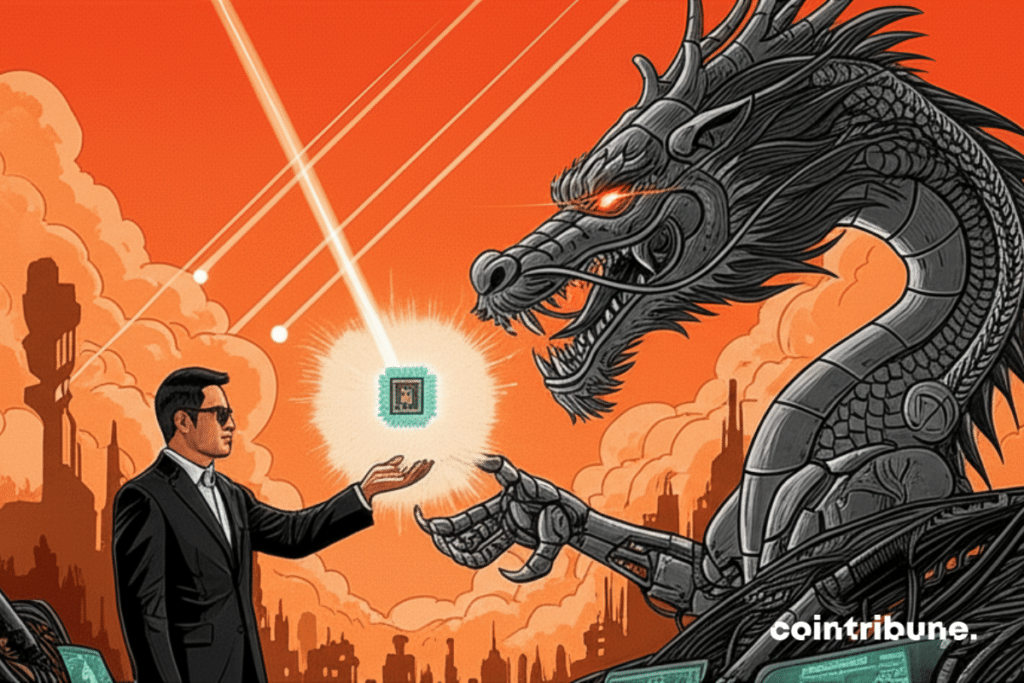China: Nvidia Prepares a Streamlined AI Chip to Evade US Restrictions
Under pressure from U.S. sanctions, Nvidia is relying on an adaptation strategy. The company is indeed preparing a new AI chip designed specifically for the Chinese market. Objective: to remain present in a sector estimated at 50 billion dollars, despite American restrictions.

In Brief
- Nvidia is developing a less powerful AI chip priced at $6,500 to circumvent U.S. restrictions.
- The company attempts to preserve its share of the Chinese market amidst Huawei’s rise.
A Discounted AI to Not Lose China
In January 2025, a rumor circulated that the Trump administration was considering banning Nvidia from selling its AI chips in China. In response to American restrictions on its products, Nvidia is preparing to launch a new lighter AI chip intended for China.
The announced price, between $6,500 and $8,000, is a stark contrast with that of the H20. The latter was selling between $10,000 and $12,000 before its ban. The technology has also been deliberately simplified to meet the bandwidth thresholds required by Washington, which stand at 1.7 terabytes per second.
The goal is clear: to avoid exclusion from the Chinese AI market, which still represents 13% of the group’s revenue. A Nvidia spokesperson even admitted that without U.S. government approval, the company risks being excluded from Chinese data centers.
The situation is critical. Proof: Nvidia’s market share in China has dropped from 95% to 50% since the first restrictions.
Good to know:
This AI chip would be Nvidia’s third attempt to comply with U.S. requirements. Through this approach, the company hopes to regain ground against Huawei, whose Ascend 910D is in the launch phase.
Between Political Pressure and Imminent Results
This strategic choice comes just days before Nvidia’s quarterly results are published. Specifically, they are expected on May 28.
Despite the loss of H20 sales, some analysts predict:
- revenue of 43.4 billion dollars;
- adjusted net income of 21.3 billion (up 66%).
Nvidia is therefore playing on two fronts: preserving its performance while protecting its place in a global AI market fragmented by geopolitical tensions.
With this more accessible chip, Nvidia thus tries to balance political pressure and ambitions in global AI. The future might also involve other regions, less sensitive than the United States and China.
Maximize your Cointribune experience with our "Read to Earn" program! For every article you read, earn points and access exclusive rewards. Sign up now and start earning benefits.

My name is Ariela, and I am 31 years old. I have been working in the field of web writing for 7 years now. I only discovered trading and cryptocurrency a few years ago, but it is a universe that greatly interests me. The topics covered on the platform allow me to learn more. A singer in my spare time, I also cultivate a great passion for music and reading (and animals!)
The views, thoughts, and opinions expressed in this article belong solely to the author, and should not be taken as investment advice. Do your own research before taking any investment decisions.